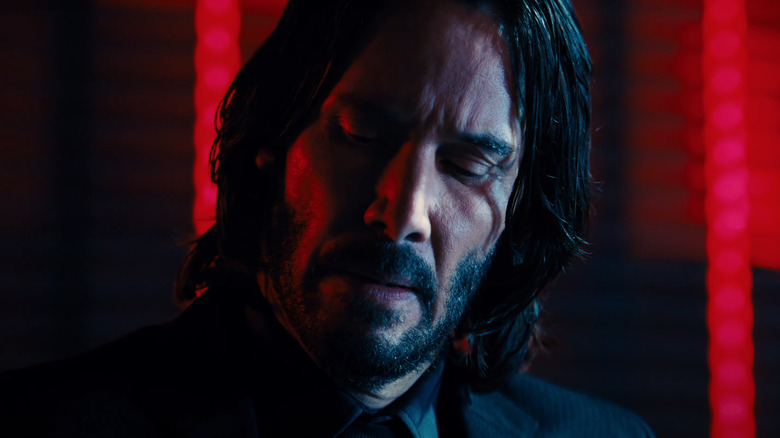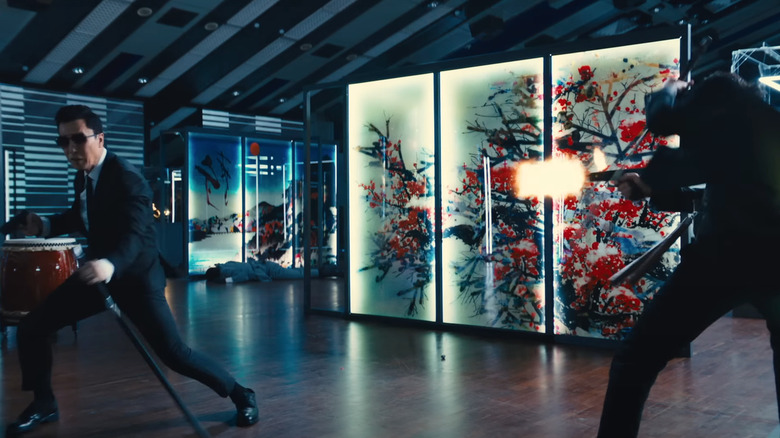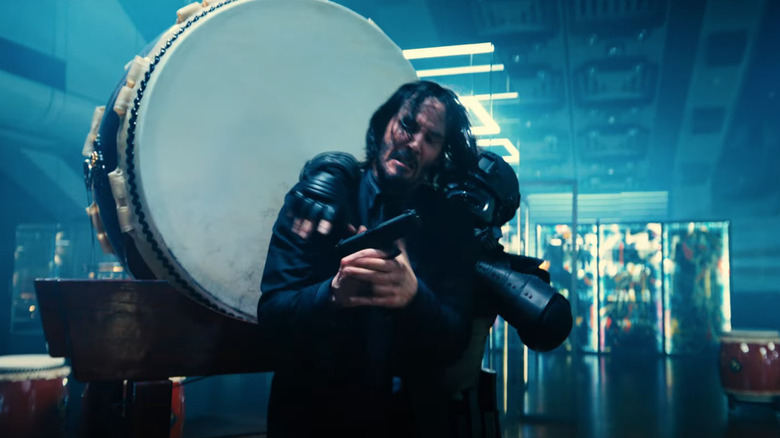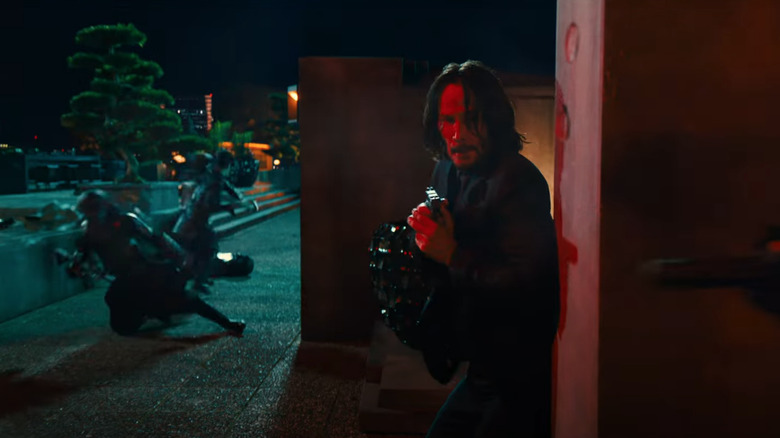
The "John Wick" movies have gone from cult favorites to legitimate blockbusters over the past decade, bolstered by a thrilling form of action design practiced by Keanu Reeves. The term gun-fu is often used to describe the fight scenes in the John Wick saga, but the style itself didn't start with Baba Yaga.
Legendary Hong Kong filmmaker John Woo pioneered gun-fu in the '80s by taking movie gun fights from sequences of static shots to highly-choreographed, kinetic experiences. Perhaps the best example came with 1992's "Hard Boiled," which contains an epic three-minute-long gunfight that, for many, represents the apex of the director's unique style.
Gun-fu would predictably make its way to Hollywood in the ensuing years, and started showing up in movies like "Bulletproof Monk," "Kick-Ass," "Equilibrium," and "The Matrix." This westernized form of the style would add an element of accuracy and precision that imbued the frenzied shots with a sense that the gunslingers themselves were highly-competent, highly trained, and much more deadly. But one film would come to represent the absolute apotheosis of this evolution of Woo's style.
2014's "John Wick," directed by Chad Stahelski and David Leitch, is exactly what you'd expect if you handed directing duties to two stunt performers. The film's unique combination of martial arts and gunplay also made use of long takes, complex camera movement, and intricate blocking to heighten the intensity of its battles. And in the process, the first "John Wick" chapter basically birthed an entire subgenre of action films, wherein some aggrieved protagonist reveals their surprisingly preeminent fighting skills while embarking on a mission for revenge. But rather than being a conscious effort to evolve gun-fu, it seems Stahelski and Leitch developed their form of the style out of necessity.
From Stuntmen To Directors

Remember when "True Detective" got everyone excited about the "oner?" The celebrated first season of Nic Pizzolatto's crime drama caused a stir with its six-minute-long take of Matthew McConaughey's Rust Cohle fighting his way through a housing project. And even though the show was far from the first to include such an ambitious tracking shot, due to the popularity of "True Detective," it seemed like every prestige drama and action movie suddenly had something similar — from Netflix's "Daredevil" to James Bond himself.
But whereas other one-take shots had hidden cuts, "True Detective" did it for real — that makes it simultaneously much more impressive, and a little rougher than other attempts. If you watch McConaughey closely throughout, he throws a couple of punches that clearly don't land. But because he's in the midst of an unbroken shot, he has to keep going. The only way to fix that kind of thing would be with cuts. And it's this kind of issue that Chad Stahelski and David Leitch were hoping to avoid with "John Wick."
The pair had been looking to make the leap from stunt choreography to directing for some time. And once Keanu Reeves, who'd worked with Stahelski on "The Matrix," showed them the "John Wick" script, they were convinced it was the movie they'd been looking for. And as veteran stuntmen, they were naturally keen to put their unique spin on the action. But with just 47 days on the production calendar -- the first "John Wick" was made for $30 million or less -- it would take some meticulous planning and ingenuity to get what they needed in time.
Reverse Engineering Off A Style

In a 2019 interview, Chad Stahelski spoke about the philosophy behind shooting the "John Wick" action scenes, where he said:
"I love live performances. I love sitting and watching a stage. So all the action [in 'John Wick'] was kind of choreographed so you can sit and watch. Again everybody gives us the long takes, the limited editing stuff. That's not like the overall goal, our goal is immersion and the more you see Keanu doing stuff the more you buy into that John Wick is a badass because you're seeing Keanu Reeves be a badass. It just goes with the immersion into the character."
Essentially, Stahelski and David Leitch were using long takes not for the sake of it, but because they felt the less they cut, the more viewers would believe they were watching an actual fight take place. But that brought about its own issues.
Stahelski elaborated on the genesis of the "John Wick" action style in a Forbes interview in 2017. In it, he revealed that, with just 47 days for filming, he and Leitch were forced to come up with a way of saving as much time as they could. And when you're trying to sell the idea of realism, the last thing you want to worry about is making obviously fake punches look real with clever editing techniques — especially if you're trying to keep the audience immersed with long takes. As Stahelski explained:
"The more you do punches and kicks, the more you gotta miss, because you gotta sell the hit, you gotta change the angle. So okay, we're gonna get rid of punches and kicks. We're gonna do judo, jiu-jitsu, and tactical gun work, so we can hold all the shots, no cuts. So we developed a style and reverse-engineered from there."
An Incidental Evolution

Chad Stahelski and David Leitch have previously spoken about their love for Hong Kong cinema -- and there's absolutely no doubt they were inspired by the gun-fu style and the John Woo movies from which it arose. But in the case of "John Wick," the gun and grappling elements seem to have been emphasized solely to allow the directors to stick to their plan of holding long shots and enhancing audience immersion. After all, if you're shooting everyone or throwing people in arm bars, you don't need to sell many punches. It just so happened that this approach also led to yet another evolution of the gun-fu style, which remained constant in the subsequent two films in the franchise, and looks to be a big part of the upcoming "John Wick: Chapter 4."
Leitch brought that style with him when he directed the Charlize Theron-led "Atomic Blonde," and it has since been central to films such as the Bob Odenkirk-led "Nobody." Elsewhere, the Korean action thriller "The Villainess" seemed to at least take some inspiration from the "John Wick" style of gun-fu -- and it'll no doubt feature heavily in the upcoming spinoffs "Ballerina" and "The Continental." All of this is a testament to the impact Stahelski and Leitch had by developing their unique action style, even if it was born out of necessity rather than a desire to push gun-fu to new places.
Read this next: The Best Action Movies Of 2022, Ranked
The post John Wick's Gun-Fu Fighting Style Was Made To Save Time and Money appeared first on /Film.
0 Commentaires